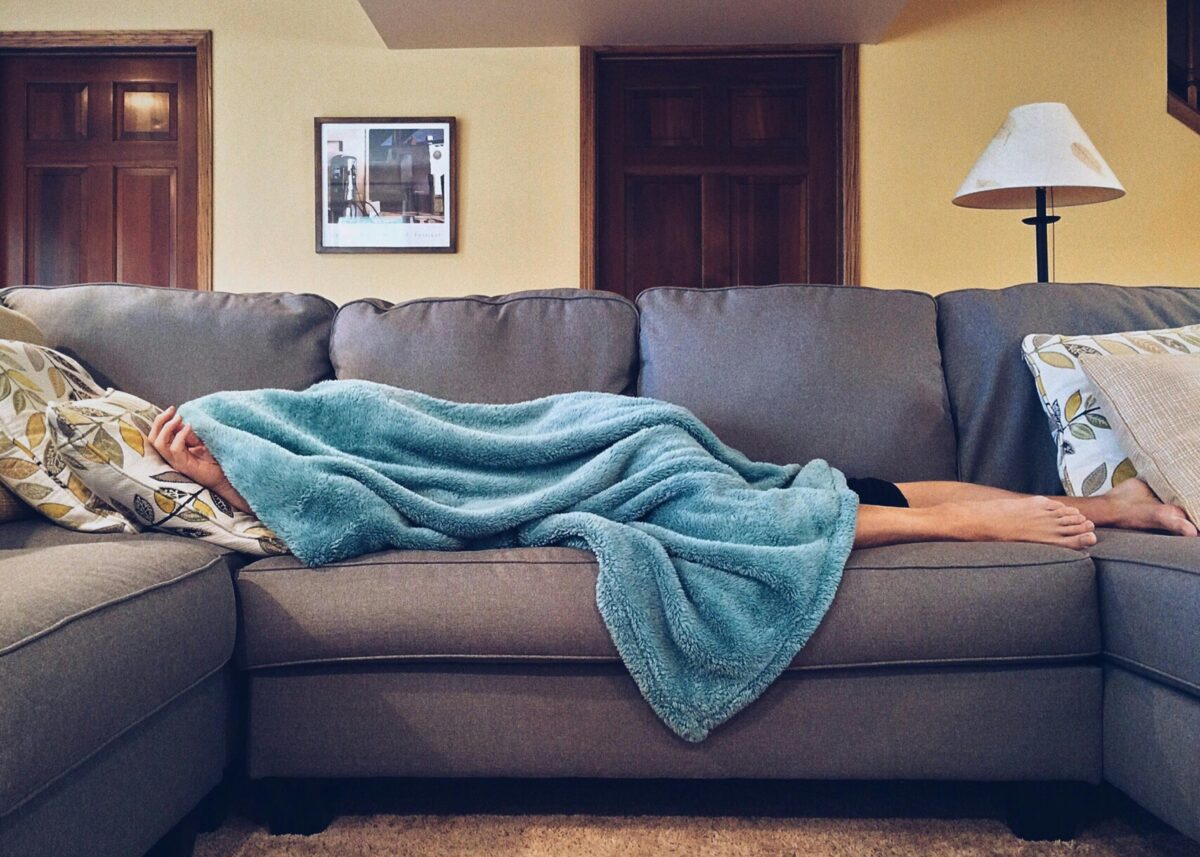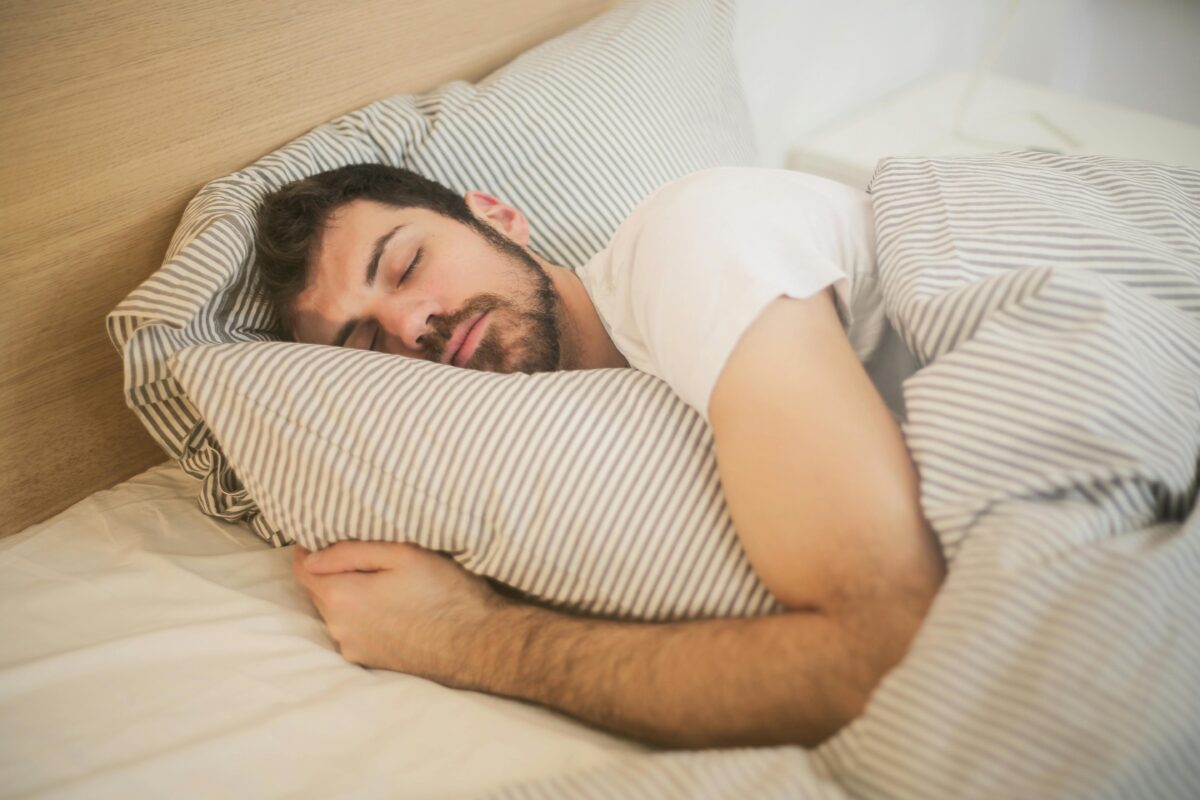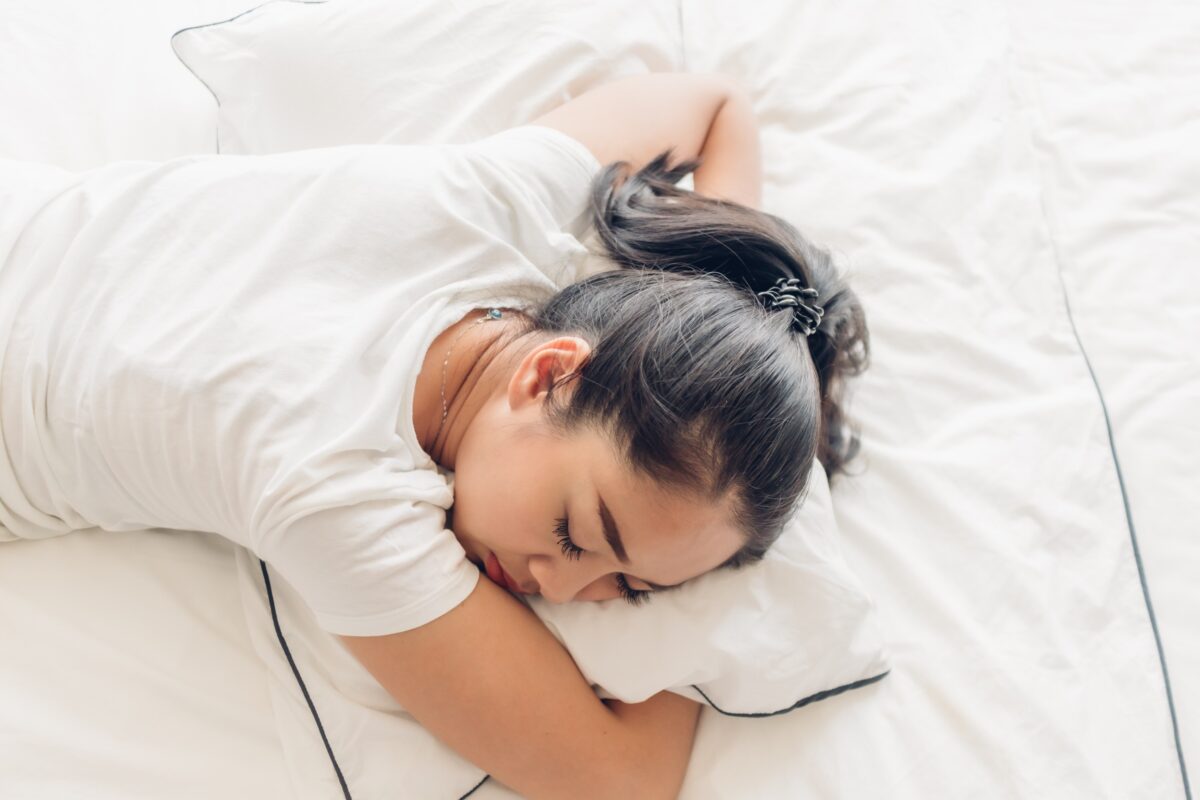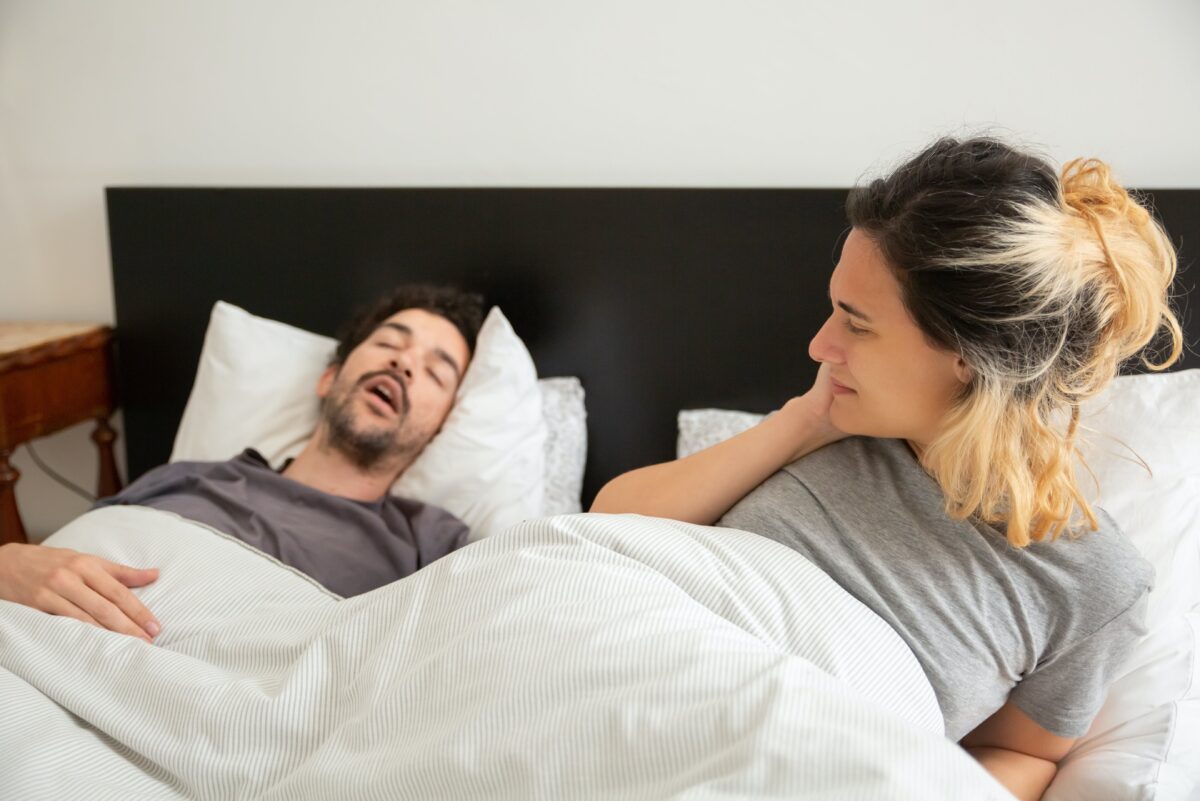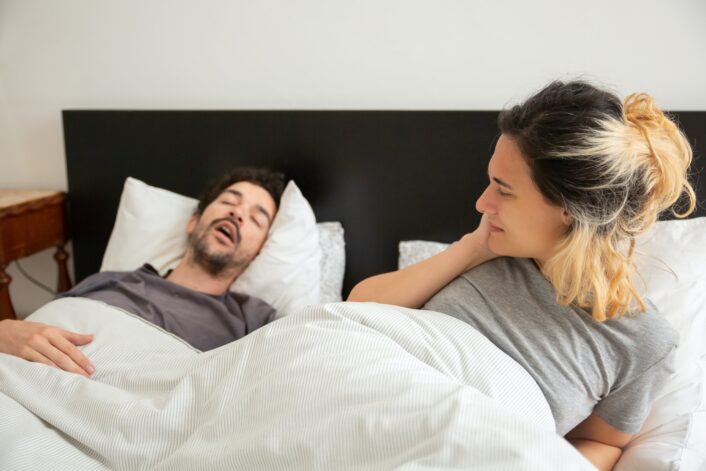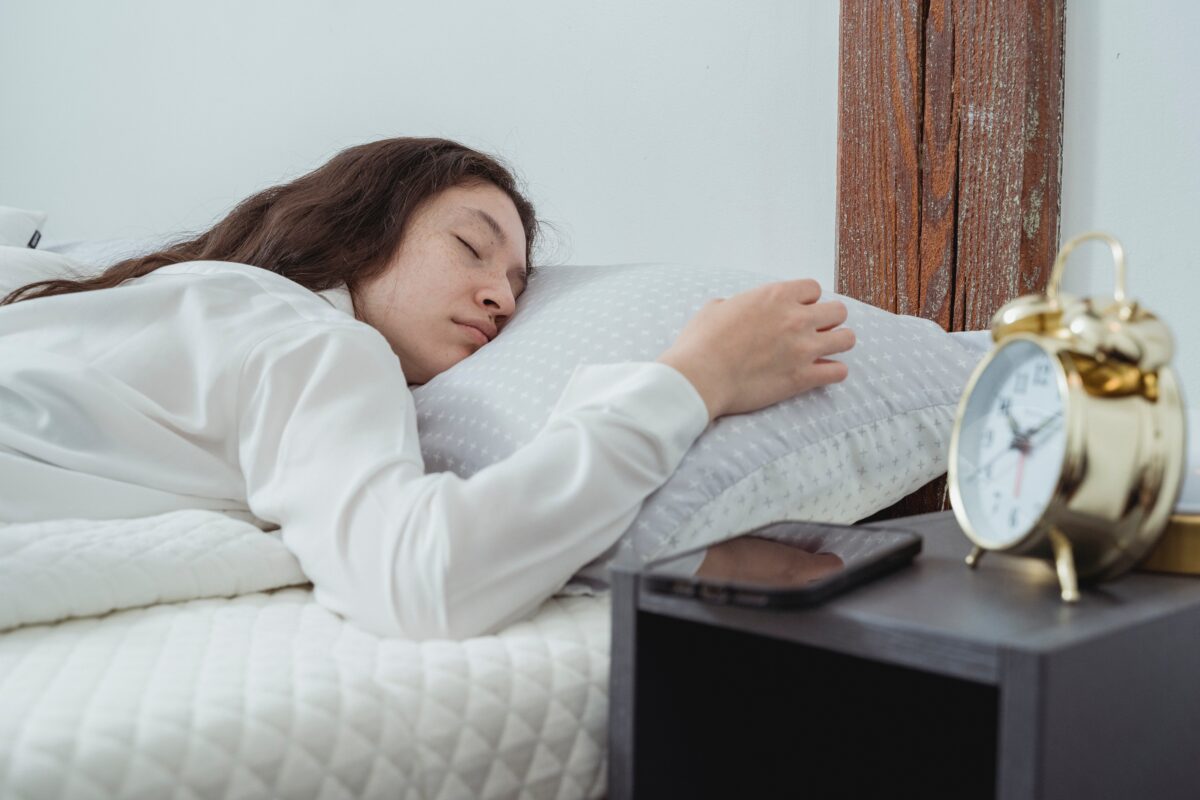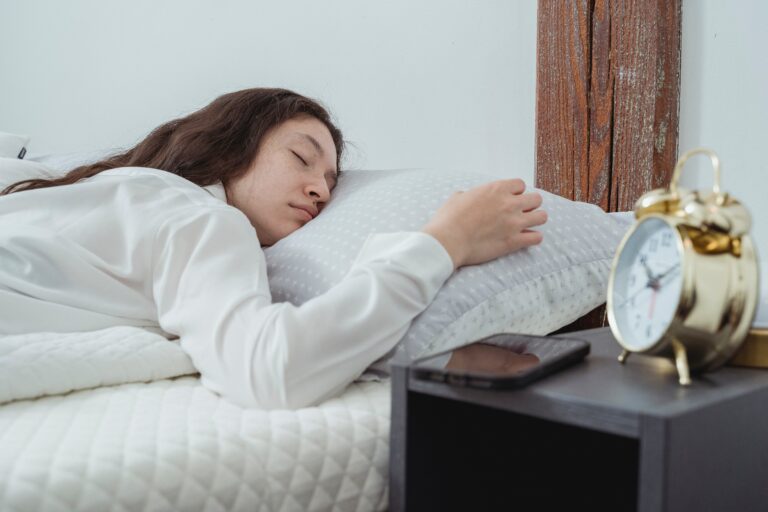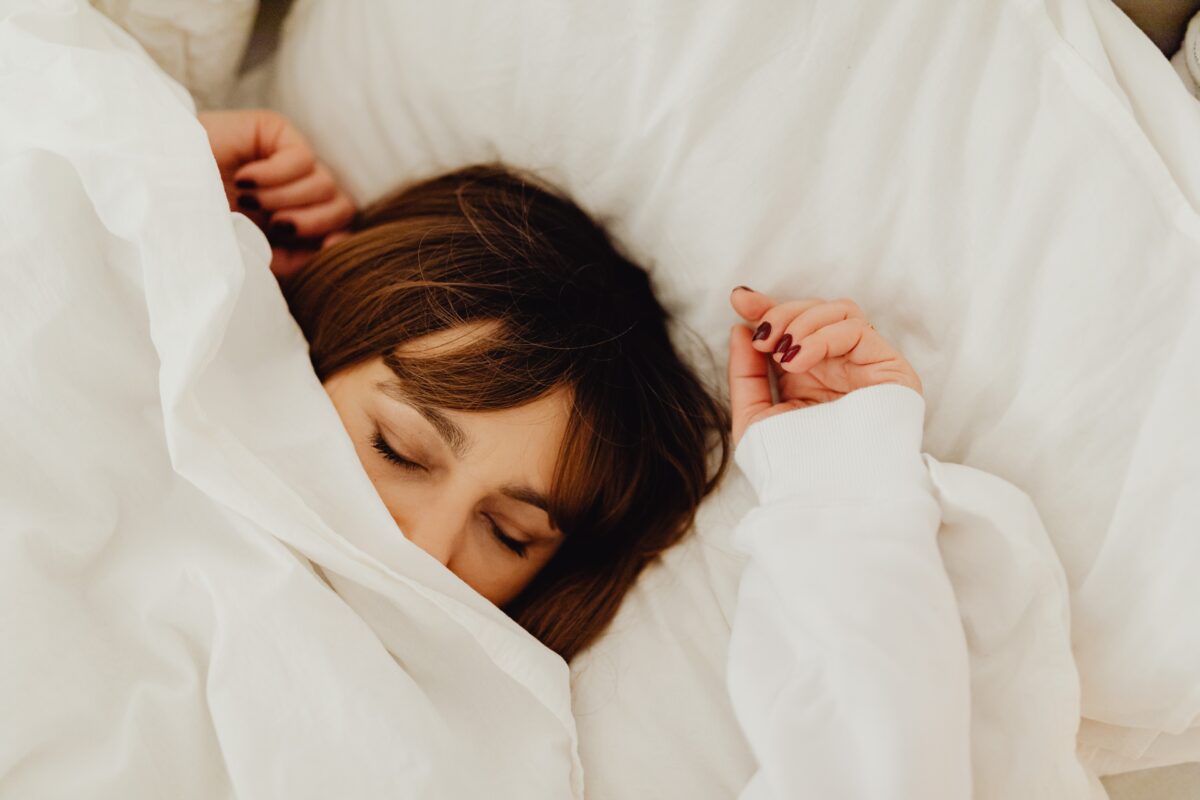Genetics and Sleep: How Genes Impact Sleep Onset Latency
Aira
on
May 8, 2024
Latest Posts
Table of Contents
Genetics and Sleep: How Genes Impact Sleep Onset Latency
Date of Content: May 8, 2024
Written by: Jess Gayo
Reviewed by: Maarit Tiirikainen, PhD
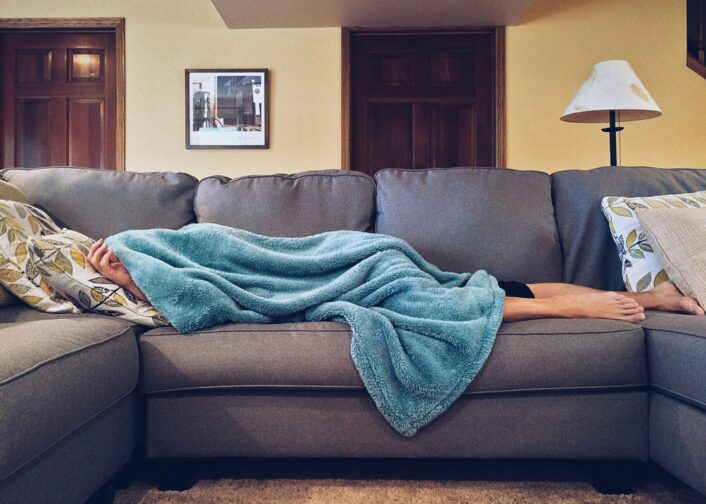
Overview
Ever wondered why some people fall asleep the moment their head hits the pillow, while others lie awake for hours? The answer lies in sleep latency. Sleep latency, the time it takes to transition from full wakefulness to sleep, is a crucial aspect of sleep health.
Certain groups are more likely to experience prolonged or shortened time to sleep Lifestyle factors can also exacerbate or lessen sleep latency issues. Understanding sleep latency and its underlying causes is essential for developing effective strategies to improve sleep quality and overall health.
What is Sleep Latency?
Sleep latency is the duration it takes for a person to go from being fully awake to falling asleep. On average, this transition period lasts between 10 to 20 minutes for a healthy adult. It’s a key indicator of sleep health, reflecting how quickly the body and mind can shift into a restful state. Understanding sleep latency can help individuals gauge their sleep quality and identify potential issues in their sleep patterns.
Interestingly, genetics play a significant role in determining sleep latency. Research has identified certain genes associated with sleep-wake cycles, influencing how quickly a person can fall asleep. A genetic predisposition means that sleep latency can vary widely among individuals, even among those with similar lifestyles and environments.
Recognizing the genetic and lifestyle factors influencing sleep latency can help individuals make informed decisions about their sleep habits. By addressing these factors, whether through stress management, establishing a consistent bedtime routine, or reducing screen time, people can improve their sleep latency and overall sleep quality. Understanding sleep latency is a step toward better sleep health and, consequently, better overall well-being.
How Do You Measure Sleep Latency?
Measuring sleep latency involves tracking the time it takes for a person to transition from wakefulness to sleep. One of the most common methods is the Multiple Sleep Latency Test (MSLT). This test is usually conducted in a sleep clinic and provides precise measurements by monitoring brain activity, eye movements, and muscle activity through polysomnography. During the MSLT, individuals are given several opportunities to nap throughout the day at two-hour intervals. The time it takes to fall asleep during these naps is averaged to determine sleep latency.
For those who prefer to measure sleep latency at home, sleep diaries and wearable devices offer more accessible options. A sleep diary involves recording the time a person goes to bed, the time they believe they fall asleep, and the time they wake up. While this method relies on self-reporting and may not be as accurate as clinical tests, it can still provide valuable insights into sleep patterns.
Wearable devices, such as smartwatches and fitness trackers, use sensors to detect movements and estimate sleep stages. These gadgets can offer an approximation of sleep latency by analyzing periods of inactivity and heart rate changes. While not as precise as the MSLT, they are convenient and can help identify trends in sleep onset over time.
Why Do People Have Different Sleep Latency?
People have different sleep latency due to a combination of genetic, lifestyle, and environmental factors. Lifestyle habits also have a substantial impact on sleep latency. Individuals with irregular sleep schedules, high caffeine or alcohol consumption, and excessive screen time before bed often experience longer sleep latency.
These habits can disrupt the body’s natural sleep patterns and make it more difficult to transition from wakefulness to sleep. Stress and anxiety are other major contributors, as a racing mind can prevent relaxation and delay sleep onset.
Is Sleep Latency Genetic?
Scientists have long sought to uncover the genetic roots of sleep patterns, which are known to have a hereditary component. In a 2016 GWAS, research using advanced technology has begun shedding light on this complex relationship.
In a groundbreaking study involving nearly 1000 middle- to older-aged adults, researchers analyzed data collected through the SenseWear Pro 3 Armband to measure various aspects of sleep and rest. This included parameters like sleep timing, duration, and quality, as well as measures of rest during daytime hours.
According to the LIFE Adult Study, over 7 million genetic variants were scrutinized, revealing several notable findings. The study highlighted the strongest association of the CSNK2A1 with night sleep latency or the time an individual takes to fall asleep at night. SNP rs74448913 in the CSNK2A1 gene is involved in regulating circadian rhythms, influencing how our bodies synchronize with day and night cycles.
However, circadian parameters like sleep onset and offset were not significantly associated with rs74448913 according to the data presented, suggesting that the effect on sleep latency is likely not due to changes in the sleep rhythm. CSNK2A1 codes for the alpha subunit of casein kinase 2 (CKII) which influences the mammalian molecular clock mechanism. It also modulates various cellular processes such as cell cycle control, transcription, and apoptosis. This explains that other pathways involved could be plausible.
This finding represents a critical step forward in understanding the genetic underpinnings of sleep behaviors. While further research is needed to confirm and expand upon this discovery, they offer valuable insights into how genetics may influence sleep patterns. This knowledge could pave the way for future studies and personalized approaches to improving sleep quality and overall health.
In another 2013 GWAS, researchers aimed to uncover genetic influences on various sleep traits through a study involving 2,323 individuals from the Australian Twin Registry. They utilized genotyping on multiple Illumina arrays and imputed additional genetic variants to examine over 2 million common polymorphisms across the genome.
Although no single nucleotide polymorphisms (SNPs) reached the stringent genome-wide significance threshold, the study identified promising associations within plausible candidate genes. Notably, a cluster of SNPs (rs7304986,rs16929275, rs2051990, etc.) located in the third intron of the CACNA1C gene showed the most significant association with sleep latency.
SNP rs7304986 appears in the meta-analysis of the results of Australian and 4 cohorts in Chronogen. The meta-analysis provided a p-value of 0.01 (β = 0.12, S.E. = 0.05). The study also identified other gene variations that show potential associations that require validation in future independent samples.
Interestingly, the findings did not replicate previous genome-wide analyses based on self-reported sleep behaviors, highlighting the importance of objective measures in genetic sleep studies. These results provide valuable insights into the genetic architecture of sleep traits and emphasize the need for further research to confirm and extend these initial observations.
What Other Factors Can Affect Sleep Latency?
Environmental factors play a crucial role in determining sleep latency, which is the time it takes to transition from wakefulness to sleep. While genetics set the stage for an individual’s sleep tendencies, the environment can significantly influence how quickly one falls asleep. Here are some key environmental factors that can affect sleep latency:
- Light Exposure: Light exposure, especially from artificial sources, is one of the most influential factors affecting sleep latency. The blue light emitted by screens from phones, tablets, computers, and televisions can suppress the production of melatonin, a hormone that regulates sleep. This suppression can delay sleep onset, making it harder to fall asleep quickly. Research shows that reducing screen time before bed or using blue light filters can help improve sleep latency.
- Noise Levels: Noise can significantly impact the ability to fall asleep. Loud or unexpected noises, such as traffic, loud music, or household activities, can disrupt the process of falling asleep. Even low levels of noise can affect those who are particularly sensitive. Using earplugs or white noise machines can help mitigate the impact of environmental sounds and promote faster sleep onset.
- Room Temperature: The temperature of the sleep environment is critical for sleep latency. A room that is too hot or too cold can make it difficult to fall asleep. The ideal sleep temperature is typically cool, around 60-67 degrees Fahrenheit (15-19 degrees Celsius). This temperature range helps the body maintain its core temperature, which naturally drops to initiate sleep.
- Bedding and Mattress Quality: Comfortable bedding and a supportive mattress can significantly influence sleep latency. A mattress that is too hard or too soft can cause discomfort, making it harder to fall asleep. Similarly, pillows that do not provide adequate support can lead to neck pain and disrupted sleep. Investing in high-quality bedding that suits personal comfort preferences can promote quicker sleep onset.
- Room Darkening: Darkness signals the body that it is time to sleep. Light, even at low levels, can interfere with the body’s production of melatonin. Using blackout curtains or an eye mask can help create a dark environment conducive to falling asleep. This is particularly important for those who live in urban areas with significant light pollution.
- Air Quality: Air quality in the sleeping environment can also affect sleep latency. Poor air quality, characterized by pollutants, allergens, or stale air, can cause discomfort and respiratory issues, making it harder to fall asleep. Ensuring good ventilation, using air purifiers, and keeping the sleeping area clean can help improve air quality and promote faster sleep onset.
- Caffeine and Alcohol: While technically dietary choices, the presence of stimulants like caffeine and alcohol in the environment can significantly impact sleep latency, caffeine is a well-known stimulant that can delay sleep onset if consumed too close to bedtime. Alcohol, although initially sedative, can disrupt sleep patterns and prolong sleep latency as its effects wear off. Limiting intake of these substances, especially in the hours leading up to bedtime, can help reduce sleep latency.
- Bedtime Routine: The routine leading up to bedtime can also be considered an environmental factor. Engaging in relaxing activities such as reading, taking a warm bath, or practicing meditation can signal to the body that it is time to wind down and prepare for sleep. Consistent bedtime routines help reinforce the body’s natural sleep-wake cycle and reduce sleep latency.
Understanding and optimizing environmental factors can significantly influence sleep latency. By creating a sleep-conducive environment—considering factors like light, noise, temperature, bedding quality, darkness, air quality, and bedtime routines—individuals can improve their ability to fall asleep quickly. Recognizing these influences alongside genetic predispositions allows for a holistic approach to better sleep health, enhancing overall well-being and daily functioning.
What is the Best Sleep Latency?
The best sleep latency, or the ideal time it takes to fall asleep, typically ranges between 10 to 20 minutes. This range is considered optimal for most adults, indicating that the body and mind are transitioning smoothly from wakefulness to sleep. Falling asleep within this timeframe suggests that the individual has a healthy sleep pattern and a conducive sleep environment.
Sleep latency shorter than 10 minutes can indicate excessive sleepiness, possibly due to insufficient sleep, sleep disorders, or other health issues. Conversely, sleep latency longer than 20 minutes might signal difficulties in winding down, which can be influenced by factors like stress, anxiety, or poor sleep hygiene. To achieve the best sleep latency, it is essential to maintain a regular sleep schedule, create a comfortable sleep environment, and manage stress effectively.
Does Sleep Latency Change as You Get Older?
Sleep latency can change as you get older. Generally, older adults experience longer sleep latency compared to younger individuals. This change is often attributed to several age-related factors, including alterations in sleep architecture, health conditions, and lifestyle changes.
As people age, their sleep patterns shift. Older adults tend to have lighter sleep and more frequent awakenings during the night, which can contribute to longer sleep latency. Additionally, age-related health issues such as arthritis, chronic pain, and medications can interfere with the ability to fall asleep quickly.
Circadian rhythms, which regulate the sleep-wake cycle, also tend to shift with age. Older adults often experience a phase advance, meaning they feel sleepy earlier in the evening and wake up earlier in the morning. This shift can affect sleep latency, especially if the individual’s sleep environment or routines do not align with their natural sleep-wake cycle.
Ways to Improve Sleep Latency
Improving sleep latency, or the time it takes to fall asleep, is crucial for better overall sleep quality and health. Several scientifically backed strategies can help reduce sleep latency by addressing both genetic predispositions and lifestyle factors. Here are some effective ways to improve sleep latency:
Maintain a Consistent Sleep Schedule
Keeping a regular sleep schedule helps regulate the body’s internal clock or circadian rhythm. Going to bed and waking up at the same time every day, even on weekends, can make it easier to fall asleep quickly. This consistency reinforces the body’s natural sleep-wake cycle, reducing sleep latency.
Create a Relaxing Bedtime Routine
Establishing a calming pre-sleep routine signals to the body that it’s time to wind down. Activities such as reading a book, taking a warm bath, or practicing relaxation techniques like deep breathing or meditation can prepare the mind and body for sleep. Avoiding stimulating activities and bright screens before bed can further enhance this effect.
Optimize the Sleep Environment
Creating an environment conducive to sleep is essential. This includes ensuring the bedroom is dark, quiet, and cool. Using blackout curtains, earplugs, or a white noise machine can help eliminate disruptions. Keeping the room temperature between 60-67 degrees Fahrenheit (15-19 degrees Celsius) is optimal for most people to fall asleep faster.
Limit Caffeine and Alcohol Intake
Caffeine is a known stimulant that can delay sleep onset if consumed too close to bedtime. It’s best to avoid caffeine in the afternoon and evening. While alcohol might make you feel sleepy initially, it can disrupt sleep patterns and increase sleep latency as its effects wear off. Limiting alcohol consumption, especially before bed, can improve sleep latency.
Exercise Regularly
Regular physical activity has been shown to help people fall asleep faster. Engaging in moderate aerobic exercise, such as walking, swimming, or cycling, can reduce the time it takes to fall asleep. However, it’s important to avoid vigorous exercise close to bedtime, as it can have a stimulating effect and increase sleep latency.
Manage Stress and Anxiety
Stress and anxiety are significant contributors to prolonged sleep latency. Practicing stress-reduction techniques such as mindfulness, yoga, or cognitive-behavioral therapy (CBT) can help calm the mind and prepare it for sleep. Journaling or talking about concerns before bed can also help clear the mind and reduce anxiety-related sleep latency.
Mind Your Diet
Avoid Too Much Exposure To Blue Light
Blue light emission from screens can interfere with melatonin production, delaying sleep onset. Avoid screen exposure an hour or two before bedtime or use blue light filters on devices if unavoidable, to help minimize the effect. Additionally, using apps that guide relaxation or track sleep can provide insights and support better sleep practices.
Consider Professional Help
If sleep latency issues persist despite making these changes, consulting a sleep specialist or healthcare provider may be necessary. Conditions like insomnia or sleep apnea require professional diagnosis and treatment. Cognitive-behavioral therapy for insomnia (CBT-I) is an effective treatment for chronic sleep latency issues.
Improving sleep latency involves a combination of lifestyle adjustments and environmental changes. Understanding the interplay between genetics and these factors can help tailor strategies for better sleep health, leading to enhanced overall well-being.
LifeDNA’s Sleep Depth Trait Report
Know the secrets to better sleep with LifeDNA’s Sleep Latency Report. Understanding how quickly you fall asleep isn’t just about good bedtime habits—it’s also about your unique genetic makeup. LifeDNA’s scientifically backed and comprehensive Sleep Report delves into the genetic factors that influence your sleep latency, offering you personalized insights to improve your sleep quality.
As you age, your sleep patterns can change, making it even more important to understand your body’s needs. LifeDNA’s Sleep Latency Report helps you uncover how your genetics play a role in these changes. With tailored advice based on your genetic profile, you can make informed decisions to enhance your sleep health and overall well-being.
LifeDNA offers a range of reports designed to provide a holistic view of your health and wellness. Alongside the Sleep Report, explore nearly 200 trait reports within categories like the Wellness Report, Nutrition Report, Vitamins and Supplements Report, Fitness Report, Personality and Cognition Report, and Skincare Report. For those looking for even more detailed insights, premium options like the Age-Related Report and Methylation Genes Report are also available.
Imagine having a personalized roadmap that guides you to sleep better, improved fitness, optimal vitamin intake, and even tailored skincare routines—all based on your unique genetic blueprint. LifeDNA makes it possible.
Start your wellness journey today with LifeDNA’s plans. Gain access to invaluable genetic insights that can transform how you approach your health and lifestyle. Discover how understanding your genetics can lead to a healthier, more vibrant you.
Don’t wait—unlock the potential of your genes and take the first step towards a better night’s sleep and a healthier life. Avail of LifeDNA’s Sleep Latency Report now and see the difference personalized genetic insights can make.
References
- https://www.sciencedirect.com/topics/nursing-and-health-professions/sleep-latency
- https://www.verywellhealth.com/sleep-latency-3014920
- https://stanfordhealthcare.org/medical-conditions/sleep/narcolepsy/diagnosis/multiple-sleep-latency-test.html
- https://pubmed.ncbi.nlm.nih.gov/26899133/
- https://www.sleepfoundation.org/how-sleep-works/sleep-latency#:~:text=Sleep%20latency%2C%20or%20sleep%20onset,of%20less%20than%20eight%20minutes
- https://www.ncbi.nlm.nih.gov/pmc/articles/PMC5841578/#:~:text=A%20mathematical%20modeling%2C%20which%20was,steadily%20after%20age%2050%20years.
- https://www.sleep.com/sleep-health/sleep-latency
- https://www.ncbi.nlm.nih.gov/pmc/articles/PMC6796223/
Customer Reviews




*Understanding your genetics can offer valuable insights into your well-being, but it is not deterministic. Your traits can be influenced by the complex interplay involving nature, lifestyle, family history, and others.
Our reports and suggestions do not diagnose or treat any health conditions or provide any medical advice. Consult with a healthcare professional before making any major lifestyle changes or if you have any other concerns about your results.

